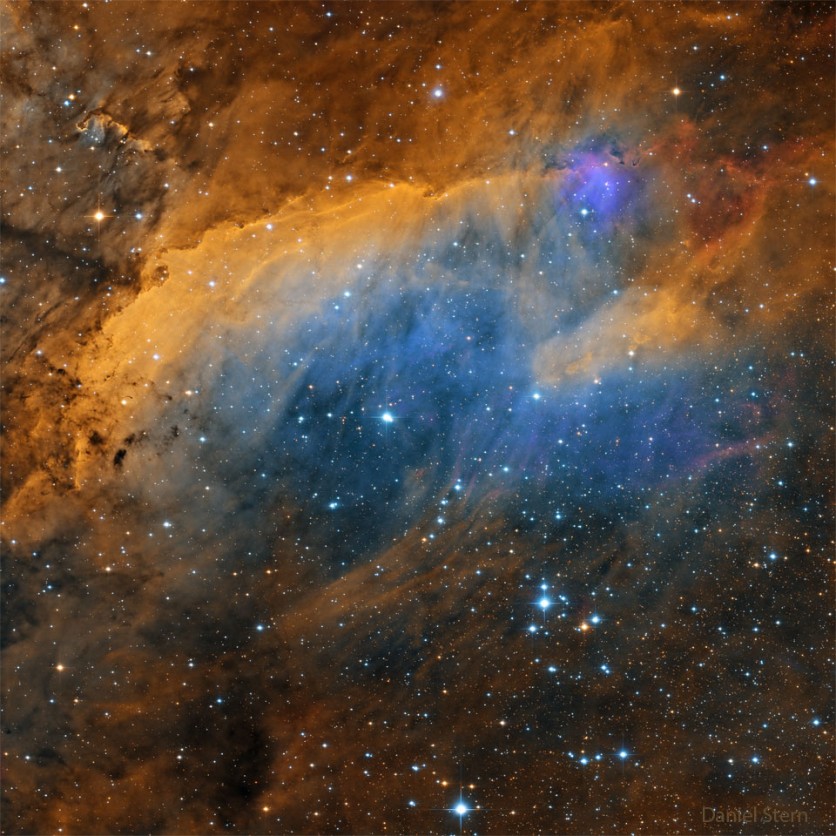NASA's Picture of the Day has gifted us with a breathtaking cosmic delicacy: The Prawn Nebula, officially known as IC 4628.
Nestled in the tail of the nebula-rich constellation Scorpius, this celestial wonder offers a visual feast for the eyes, captivating astronomers and stargazers alike.

Surrounded by Massive Youthful Stars
IC 4628 owes its radiant glow to a celestial dance between massive, youthful stars and the nebulous gas surrounding them. These hot and brilliant stars, just millions of years old, emit invisible ultraviolet light that interacts with the nebula, causing a spectacular display of colors.
As the ultraviolet light strips electrons from atoms within the nebula, these charged particles eventually recombine, producing the mesmerizing visible glow that dominates the cosmic landscape. The brilliance of this nebula is most notably marked by the rich red hues of glowing hydrogen gas.
The sheer size of this cosmic masterpiece is awe-inspiring, spanning an estimated distance of 6,000 light-years and measuring approximately 250 light-years across.
To put this into perspective, it extends over an area equivalent to more than three full moons on the night sky, leaving observers marveling at the sheer magnitude of the Prawn Nebula.
While scientists have cataloged this celestial wonder as Gum 56, in honor of the renowned Australian astronomer Colin Stanley Gum, it has also earned a more delectable moniker among enthusiasts-the Prawn Nebula.
For those with a fondness for seafood, the comparison might be irresistible, as the nebula's delicate tendrils and ethereal beauty resemble the elegant shape of a prawn, a celestial delicacy adorning the cosmic banquet.
The stunning image of the Prawn Nebula, captured and shared by astrophotographer Daniel Stern, offers a glimpse into the cosmic ballet unfolding in our universe.
This exquisite composition, taken over several nights in April from Rio Hurtado, Chile, showcases the nebula's captivating allure and invites observers to immerse themselves in the cosmic wonders that grace our night sky.
Emission Nebula
Emission nebulae like IC 4628 are composed of ionized gas that emits visible light due to interactions with nearby hot and massive stars. In the case of the Prawn Nebula, the ultraviolet radiation from these young stars ionizes the surrounding gas, causing it to emit light.
Inside these nebulae, there are ionized atoms, meaning that the atoms have lost one or more electrons due to the intense radiation from nearby stars.
When electrons recombine with these ionized atoms, they release energy in the form of light. The specific colors of the emitted light depend on the types of atoms involved and the energy levels of the electrons.
One of the most common emission lines in nebulae is the red emission line of hydrogen gas (H-alpha). When the electrons recombine with hydrogen atoms, they emit red light. This is why many emission nebulae, like the famous Orion Nebula, appear as vibrant red or pink in astronomical images.
Emission nebulae play a crucial role in the life cycle of stars. They are often associated with regions of active star formation, where new stars are being born from the gravitational collapse of gas and dust.
Related Article : [LOOK] NASA Catches Shark Nebula's Starry Jaws in Stunning Image

ⓒ 2026 TECHTIMES.com All rights reserved. Do not reproduce without permission.




